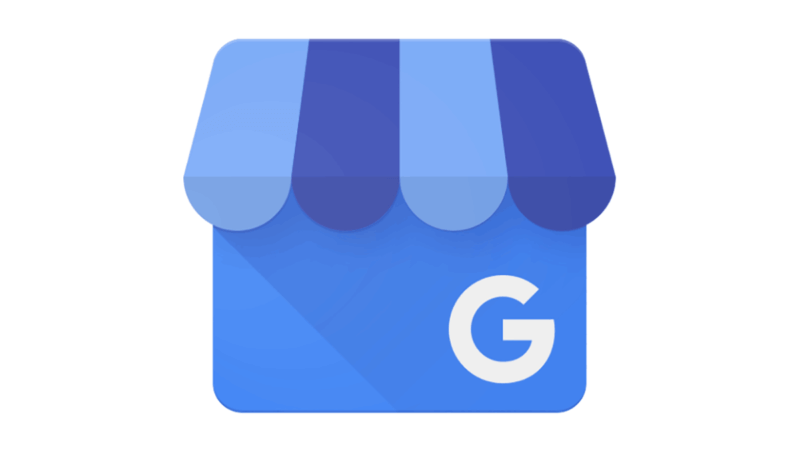How I Launched A $200K/Month Gmail Mail Merge Tool
Hello! Who are you and what business did you start?🔗
I’m Ajay! I created GMass, a platform to send cold emails and email marketing campaigns with Gmail. It works as a Chrome extension. Most of our customers are entrepreneurs and salespeople, but our customers really run the gamut from super small to the biggest tech companies in the world. Almost every major tech company you can think of uses GMass in some way, including Uber, Lyft, LinkedIn, Twitter, Indeed, Google, Salesforce.com, and Snapchat. Since I launched GMass in 2015, we’ve had over 500,000 user signups.

What's your backstory and how did you come up with the idea?🔗
I’ve been in the email marketing game for a while. I started another platform way-way back in 2002 called JangoMail. That was a traditional web-based platform that I ran for 10 years and got acquired in 2012. It competed with the more traditional email marketing services like MailChimp and Constant Contact.
In mid-2013, while soul searching for my next venture, I decided I wanted to build a way for people to respond to emails faster. Gmail had just released an API, so the technology was finally available to work with Gmail messages outside of the native Gmail product. I named it Wordzen.
While working on Wordzen, I found that I needed a way to send some small group personalized emails, and I didn’t like the existing solutions. GMass was built as an internal tool to help run Wordzen. As it turned out though, Wordzen never gained much traction, but GMass did. Actually, Slack started the same way.
I had savings from the JangoMail acquisition, so that’s how I funded everything. I actually didn’t do much in terms of market validation. I know that’s a faux pas in the startup world these days, but I had enough of an email marketing background that I sort of self-validated the idea. If I was starting anything outside of email though, where I’m not an expert, proper market validation would be a necessity.
Take us through the process of designing, prototyping, and manufacturing your first product.🔗
I was sitting in a hotel room in Honolulu when the inspiration for GMass struck. My backend programming skills were weak at the time, so I spec’d out how I wanted it to work and handed it off to a backend developer contractor. In a week, he had done his part, and then I spent the next week building the first version of the Chrome extension. I based my Chrome extension on a library that had just been published that made manipulation of the Gmail interface easy.
After two weeks, I had a working version of GMass. It was a button next to the Send button in Gmail, and when you pressed it, it sent out your email “campaign-style”, with individual emails going to each address in the To field. In that first version, there was no tracking, no personalization, and no schedule. It was just a button to send out a mass email campaign via the Gmail interface.

I then posted it to Reddit’s /r/startups subreddit, got it featured on Product Hunt, and got it listed on the Chrome Web Store.
I hate software patents. There were probably a few GMass features and workflows I could have patented back then, but I personally am so vehemently against software patents and despise patent trolls, that I specifically avoided the process because doing so would have been contrary to my own core values. Example: I’m an avid Amazon shopper, but it bothers me to my core that they patented the “1 click order” button way back when, since it offered nothing novel from a technology standpoint.
If I could go back in time, I’d cultivate a list of people interested in the product before the product was even available.
Describe the process of launching the business.🔗
I remember the excitement of being on the homepage of Product Hunt for 24 hours and seeing new signup come in every 2 minutes. Every 2 minutes! It was such a rush to see so many people on the website at once and so many “test” email campaigns being sent. It also provided a lot of feedback. Most importantly though, it gave me the validation I needed to make the decision to pursue this as a business. I tend to get stuck in my own head, and it’s easy to feed my own ego with my own irrational thoughts. But getting this response from the outside world was far more validating.

I paid for everything out of my own savings, but it didn’t really cost me much to begin. I paid a contractor $5,000 for some backend programming help, my Amazon AWS bill was negligible at the time, and I paid a designer a few hundred dollars to create a logo and some annotated screenshots. The rest, including the first version of the GMass website, I did on my own. Looking at it now, it’s embarrassing!
One thing I would do differently if I could go back in time is that I’d cultivate a list of people interested in the product before the product was even available. Building a product, and then telling people about it doesn’t generate nearly as much interest as weaving together the build and the marketing process. After launch, every entrepreneur has to figure out how to do both simultaneously anyway, so you might as well start like this from the beginning.
Since launch, what has worked to attract and retain customers?🔗
The #1 thing that has worked has been publishing content to my blog. In the beginning, I didn’t take a data-driven approach to write. I wrote what I thought would be useful to people. I taught people to email marketing techniques and concepts that I myself found interesting. I wasn’t doing any keyword research or any link building. Luckily, a lot of that content, despite not targeting any specific keyword, started ranking and continues to rank well today. I always frowned upon the SEO industry, thinking they were only trying to write content to game the search algorithms, and that their content wasn’t adding any value. While that’s still true for most company blogs, I now take a blended approach, publishing content that is targeted towards a search phrase, and content that just meets my fancy.
The #2 thing is finding someone that’s actually good at paid search. Similar to SEO, I used to frown on paid search, because I could never get a decent ROI on it. Then I realized that the reason for that was that I was managing the ads myself and it turned out, I had no idea what I was doing. Once I found someone with the expertise to continually test and refine the ads until we got the results we wanted, it proved to be a valuable channel. Nowadays I spend $20K+/month on ads, and it is indeed fruitful.
How are you doing today and what does the future look like?🔗
GMass is doing fairly well for a non-funded bootstrapped startup. It’s doing over $200K in MRR, and a decent amount of that is profit. Still, though, I’m not running GMass to be a profit center for me. I’m running it for growth, and if I could figure out how to spend more to grow more, I would. I feel like I’m running out of channels where I can efficiently spend to grow. Sure, I can always up my paid ad spend, but the law of diminishing returns kicks in quickly there.
For 2020, my goal is to morph GMass into a data company. While there are lots of email platforms like GMass, very few provide good, useful, aggregated data. We’ve already started down this path with our domains portal (gmass.co/domains), but we have a treasure trove of data from having sent almost a billion emails, and I want to make this data available in a beautiful, searchable, and real-time format. So coming later this year, you’ll be able to type in any vertical market and see email open rates from the last week for that industry. Or you’ll be able to tell what devices opened the most emails in the last month. Or you can see what the average number of follow-ups are required to get a reply and whether that number is trending up or down.
I don’t pay close attention to the traditional SaaS metrics, CAC, LTV, and conversion rates. I find that if I’m paying attention to too many stats, driving any one of them forward becomes hard. So instead, I pay attention to just these, and I obsess over these every hour of my life:
- Number of new users
- Number of new paid users
- Organic traffic sessions
My team is small, nimble, and distributed. I have 4 people working full time, remotely in the Philippines, and then everyone else is scattered around the globe. There are about 20 people that work with GMass fulltime and part-time.
With my team, I’ve set one and only one end-of-year goal, and that’s to have 20,000 paying customers by the end of 2020. Most everything the team does should be with that goal in mind.
Through starting the business, have you learned anything particularly helpful or advantageous?🔗
Every startup wants attention, in the form of press, podcasts, and social media engagement. One of the most surprising things I’ve learned is that there’s no correlation between the amount of effort I put into getting attention and the attention that I actually get. I’ve spent days working on the perfect pitch to TechCrunch, only to never hear a smidge back from them. Then I’ve spent 10 minutes working on a technical post from my blog, that ends up blowing up because of somebody posting it on Hacker News.
You don’t have to do something groundbreaking to have a successful business. GMass is probably the millionth email sending platform, and one of the smallest.
I’ve had this experience multiple times with GMass. Something that I’m not even doing for the attention, ends up getting a lot of attention, while when I put effort into getting attention, it rarely materializes. It holds true in other industries also. John Lennon wrote Imagine in one single session one morning. Often you’ll hear of artists saying they wrote their greatest hit in just 10 minutes. The amount of time you spend on something has no correlation with how successful it will be. So if you’ve been working on your startup for 5 years and don’t have much to show for it yet, you’re probably in trouble. I wrote the first version of GMass in just two weeks.
That said, I am putting a lot of effort into this interview right here, so if the pattern holds true, nobody will ever read this. But I’d love for the universe to prove me wrong.
What platform/tools do you use for your business?🔗
Oh boy, I use a ton of tools, but there’s probably not a lot that you haven’t already heard of, and my reasons for using them are probably the same as everyone else’s reasons. I use Slack to communicate with the rest of the company, including freelancers and vendors. Certain freelancers prefer other tools, so I also use both Asana and Trello. I use Gmail, obviously. I use Upwork and Craigslist and Onlinejobs.ph to recruit freelancers, everybody from designers to programmers to sysadmins to virtual assistants.
Here’s a little secret. People don’t often think of Craigslist as a tech recruiting platform, but it works surprisingly well. Better than a lot of tech-specific job sites.
We do not use a “regular” CRM system, but instead, use a homegrown CRM system that I wrote. GMass is present on most social media platforms, but our focus for 2020 is YouTube.
Those are the big ones. I also use Dropbox to manage code, WordPress for my blog, and a host of WordPress plugins like Yoast, Akismet, and some lesser-known ones. I’m obsessed with Google Analytics -- it’s the tool I spend most of my time daily. I find all the data fascinating, and I use it to make decisions weekly. I’m surprised at how little tech CEOs know about web analytics. I’d venture to guess that 95% of tech company CEOs wouldn’t know how to figure out how many people visited their Pricing page in the last month.
And for email marketing, I use MailChimp. Just kidding. Obviously I use GMass.
What have been the most influential books, podcasts, or other resources?🔗
I haven’t read a book or listened to a podcast in years. That’s probably odd for a tech entrepreneur, but I find my time is better spent executing tactical plans with the business than reading/listening to others. I have a big list of growth ideas that I want to try that keeps me busy enough.
One book that has proven invaluable over my career though, is Topgrading. It’s a recruiting methodology. There’s a lot to it, but the most valuable part is the Topgrading Reference Check, which is a scripted way to conduct reference checks for potential employees. It’s awesome. There have been several candidates in the last year that I was 99% sure I was going to hire, and then I conducted the Topgrading Reference Check and I changed my mind.
Advice for other entrepreneurs who want to get started or are just starting out?🔗
You don’t have to do something groundbreaking to have a successful business. GMass is probably the millionth email sending platform, and one of the smallest. By comparison, MailChimp is one of the oldest and biggest. We’re both making decent money.
Start contacting potential users before you’re done building your product. I’m a software developer and I’ve fallen into the trap of perfecting my product before seeking out users time and time again. In fact, I’m sure I’ll do it again at some point in my career. Because I put so much effort into building my software, it’s easy for me to think that building the website, app, or Chrome extension is the hardest part. It’s not. Getting people to use the product is the hardest part. I vow to never build another product again unless I already have a distribution channel in mind.
If you’re building a tech product, it’s a lot easier to be found if people are already searching for what you do. With GMass, people are already searching for a cold email tool, so GMass will eventually be found. With my former product Wordzen, which was an email editing/writing service, people aren’t already searching for that. That makes the product 1000x harder for people to notice.
Lastly, I’ve seen too many entrepreneurs fall into the trap of activities that they think is important but actually aren’t. A good example is designing your company logo. Entrepreneurs get excited about launching a new company and want to get the logo just right, so they post a few designs on Facebook, solicit feedback from their friends, then communicate those ideas back to the designer, and keep iterating until the end of time. Your logo doesn’t matter. Nobody cares what your logo looks like until you’re a $100M+ company. And, unless your product itself is a web-based platform, you might not even need a website in the beginning.
Spend your time building your product and talking to potential users.
Are you looking to hire for certain positions right now?🔗
I’m always looking for technical writers that can write about email marketing, Gmail, and SMTP. This is a niche need, and I’ve never been able to find someone who can write in the style that I wish. You have to have deep expertise with email and also be a good writer, and I know that’s a tall order.
Where can we go to learn more?🔗
If you have any questions or comments, drop a comment below!

Download the report and join our email newsletter packed with business ideas and money-making opportunities, backed by real-life case studies.

Download the report and join our email newsletter packed with business ideas and money-making opportunities, backed by real-life case studies.

Download the report and join our email newsletter packed with business ideas and money-making opportunities, backed by real-life case studies.

Download the report and join our email newsletter packed with business ideas and money-making opportunities, backed by real-life case studies.

Download the report and join our email newsletter packed with business ideas and money-making opportunities, backed by real-life case studies.

Download the report and join our email newsletter packed with business ideas and money-making opportunities, backed by real-life case studies.

Download the report and join our email newsletter packed with business ideas and money-making opportunities, backed by real-life case studies.

Download the report and join our email newsletter packed with business ideas and money-making opportunities, backed by real-life case studies.



















